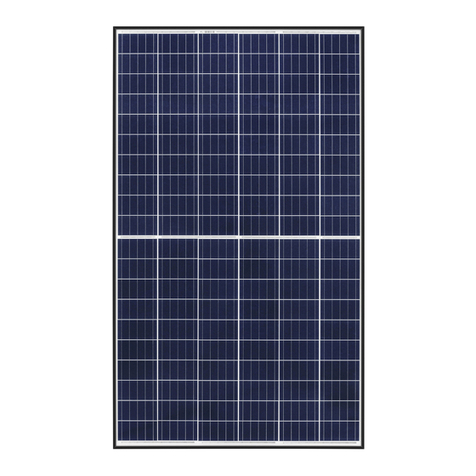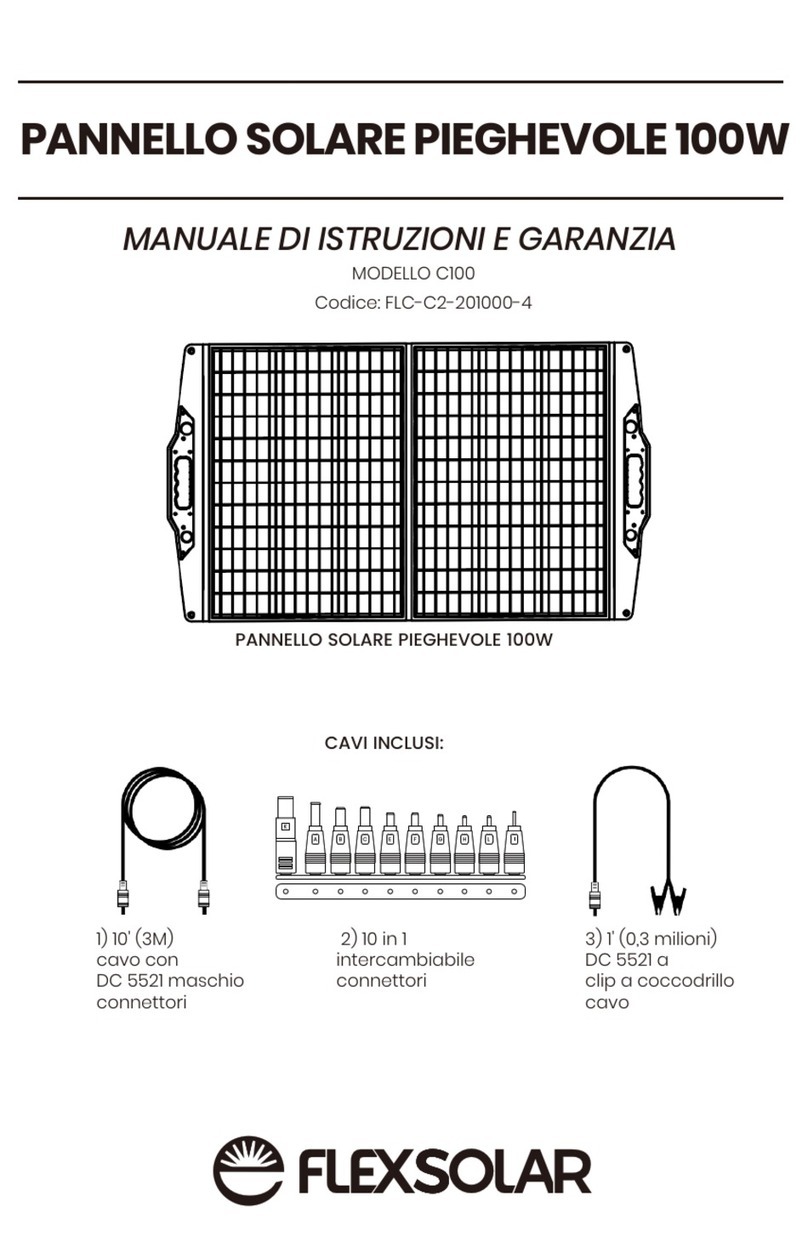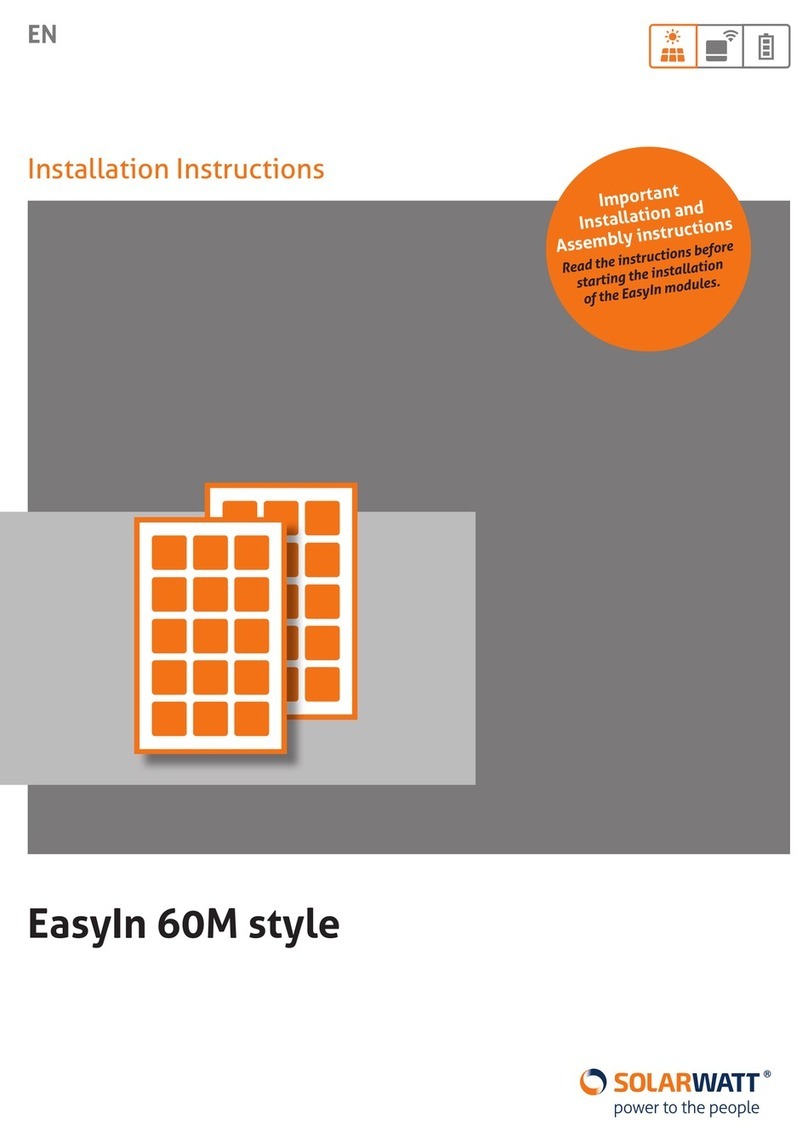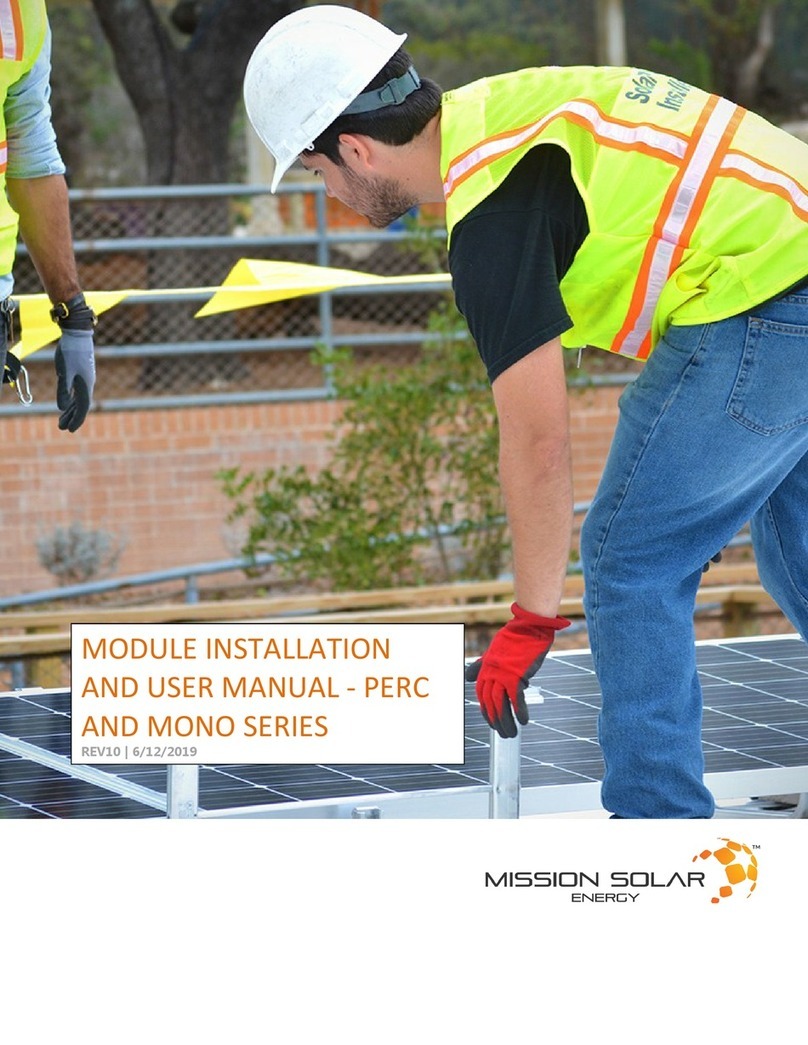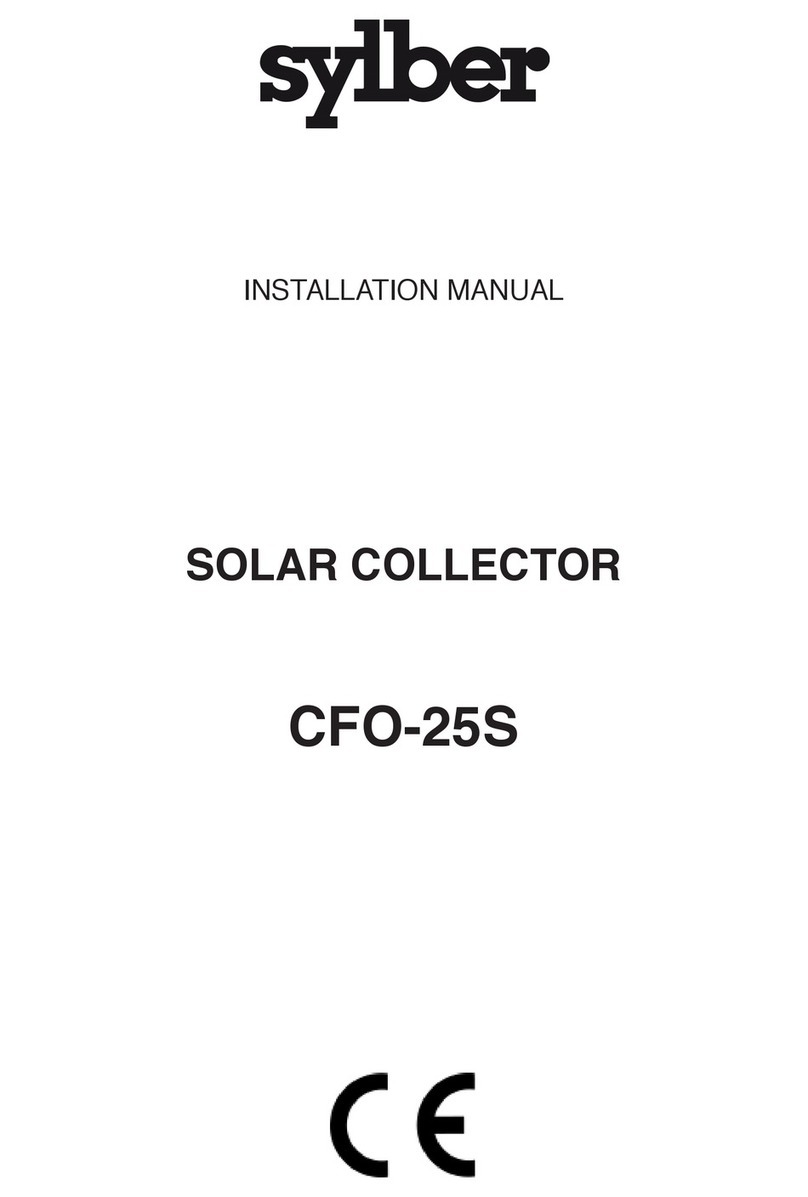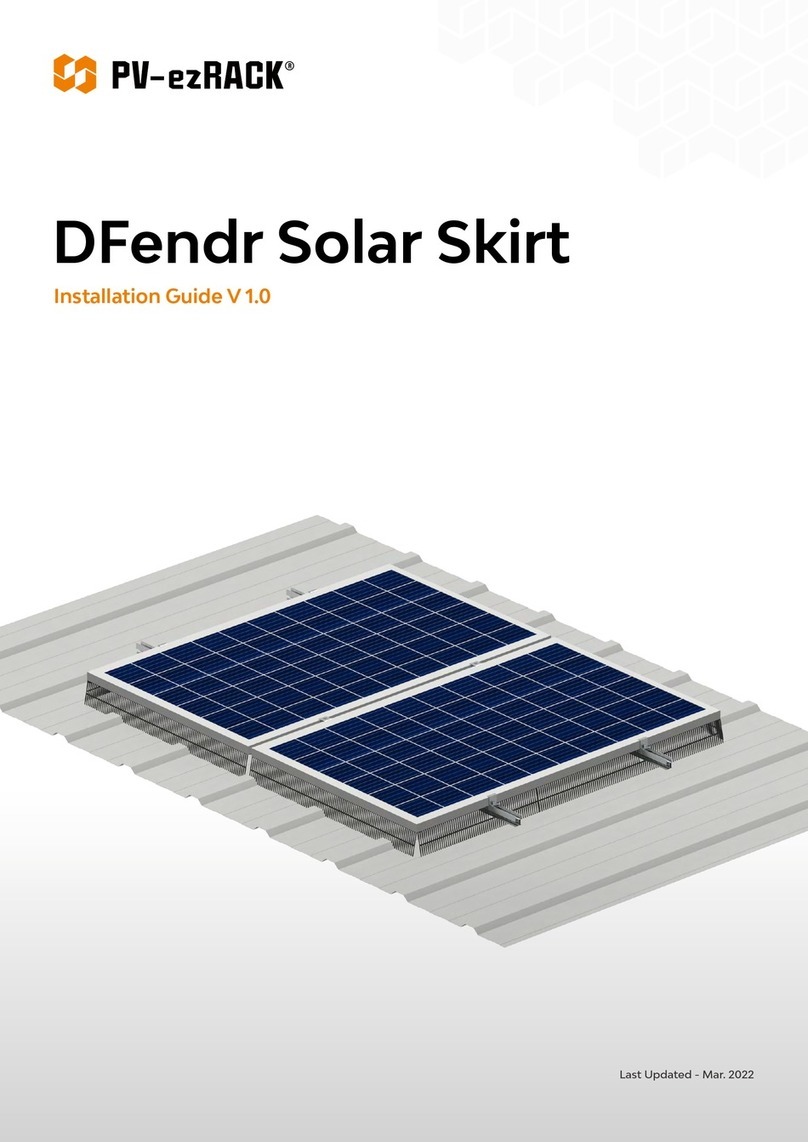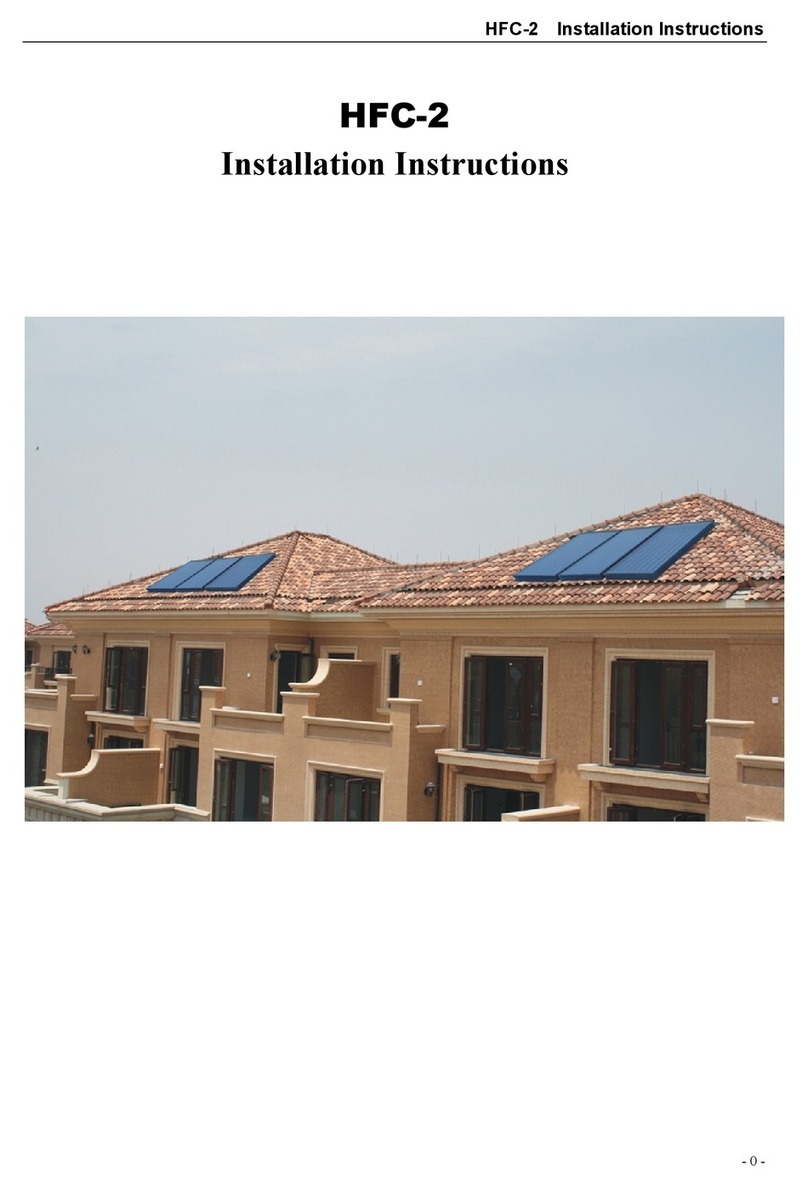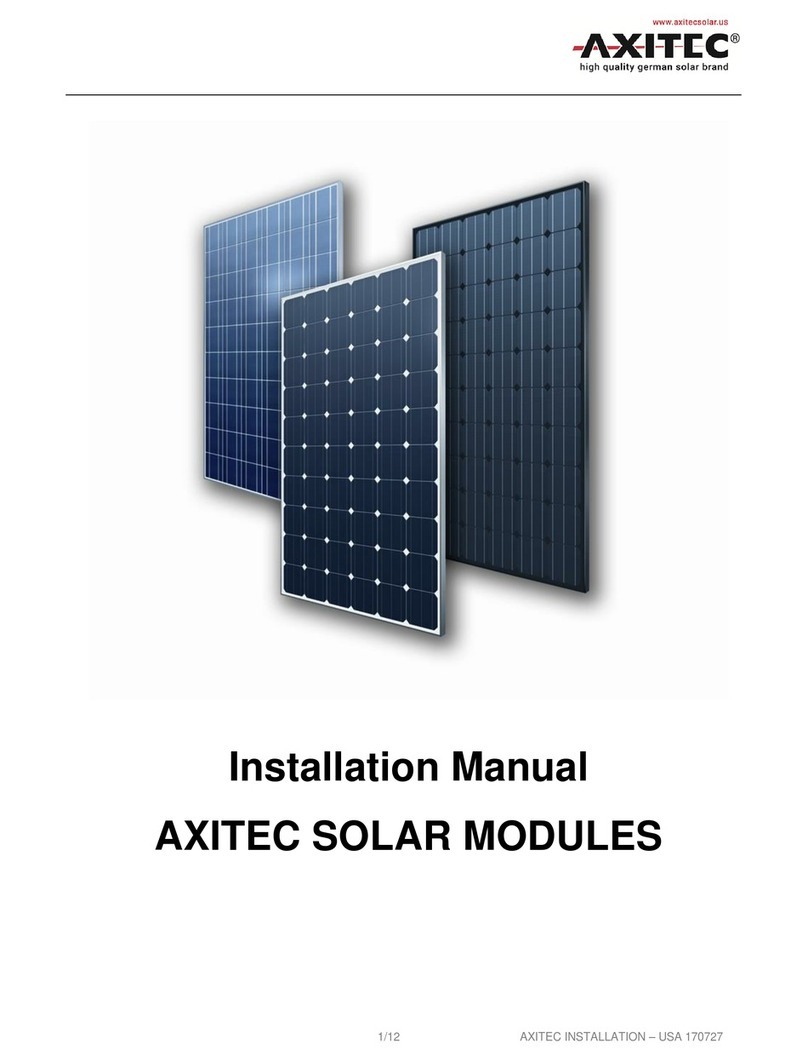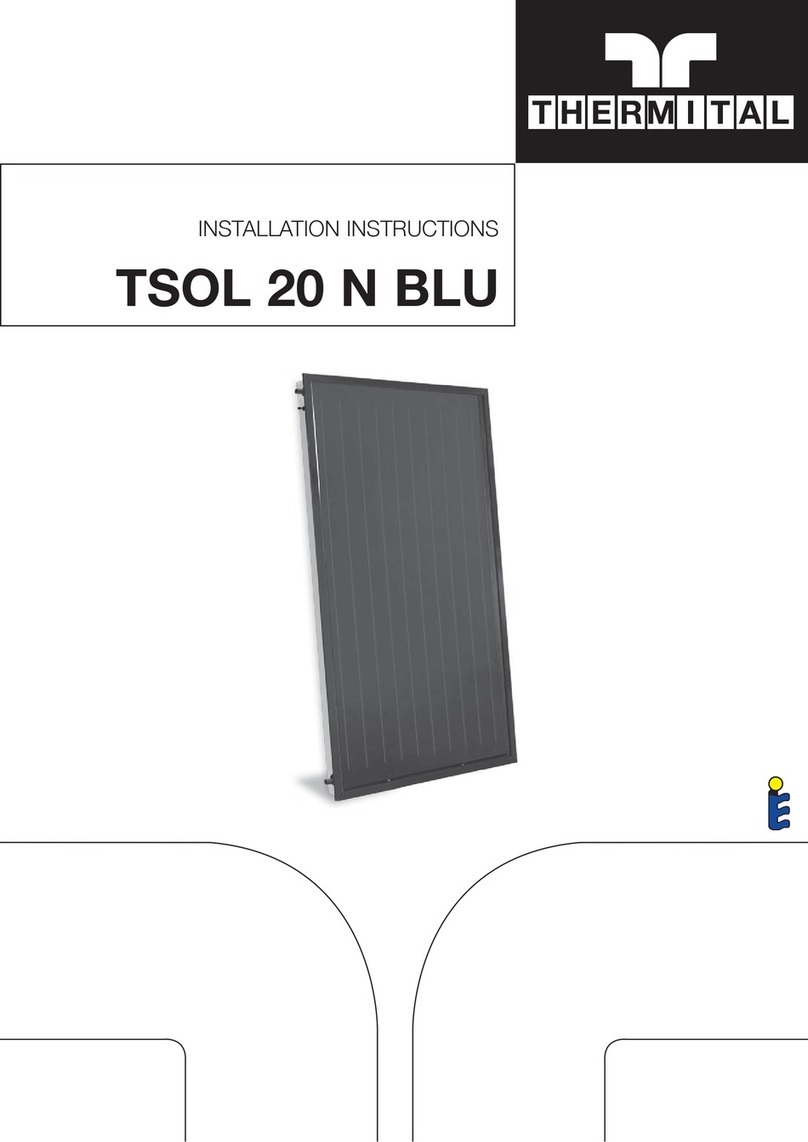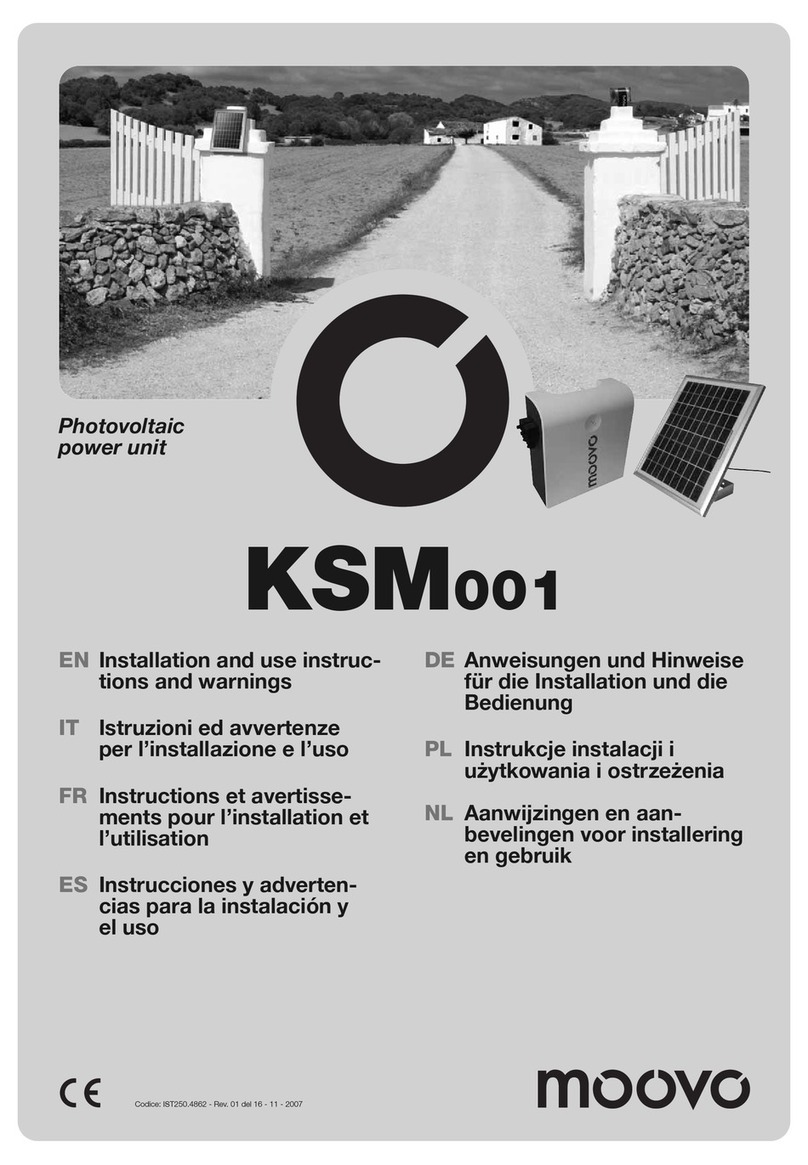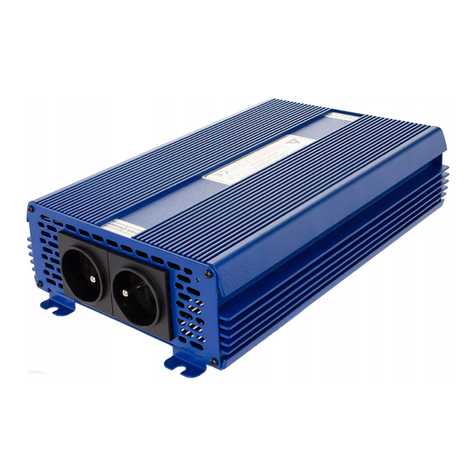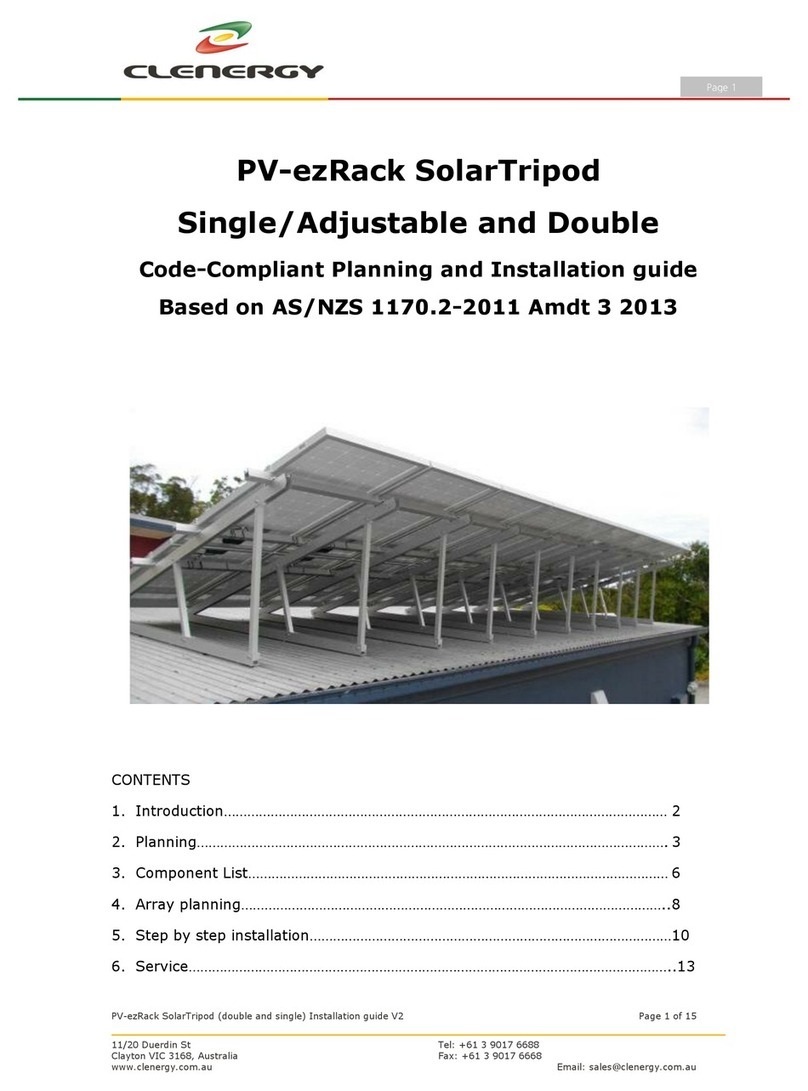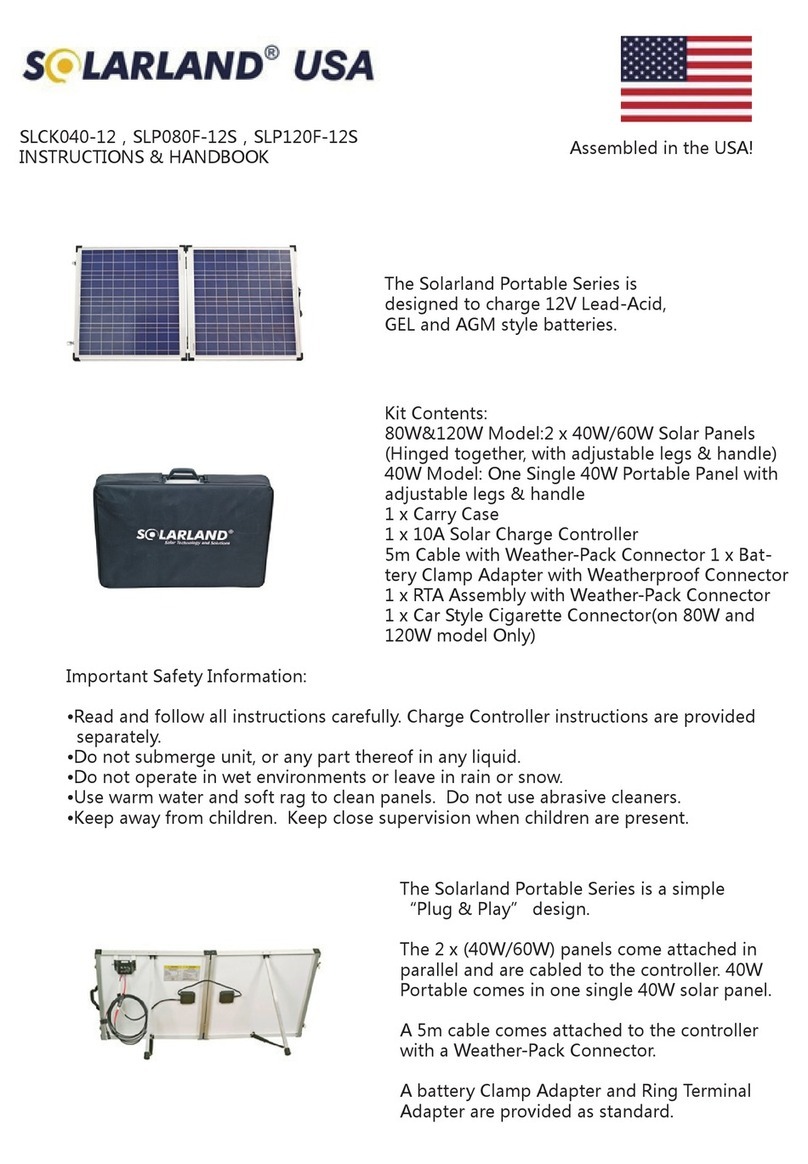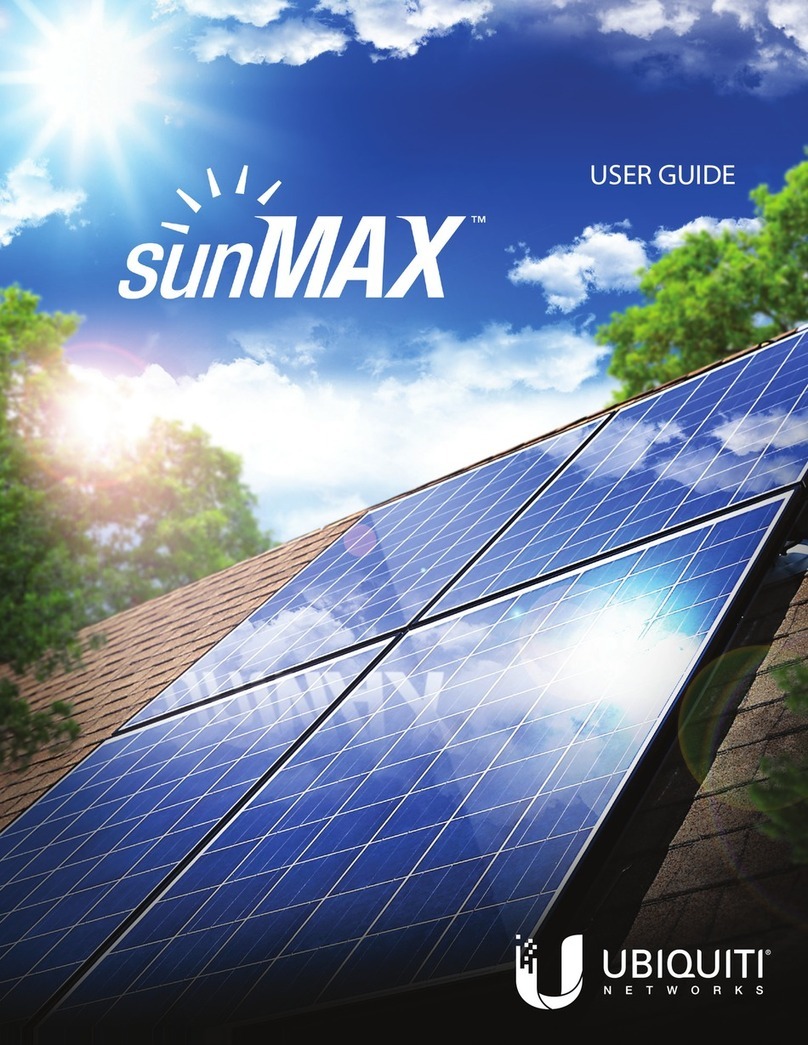
3
GENERAL INFORMATION
b
The system must be installed by specialist person-
nel. Use only the assembly material supplied with the
solar collector. The supporting framework and all ma-
sonry or brickwork fixing points must be checked by
a person expert in static loading, and must be suita-
ble for the nature of the installation site.
b
The solar collector must only be installed on roofs or
frames that are strong enough to support its weight.
The strength of the roof or frame must be verified on
site by a person expert in static loading before the so-
lar collector is installed. During this process, it is im-
portant to verify the suitability of the supporting frame
to hold the screw fasteners that fix the solar collector
in place. An expert in static loading must verify that
the entire frame complies with relevant standards, es-
pecially in areas liable to snow and areas exposed to
high winds. Conditions (gusts of wind, formation of
wind vortices, etc.) at the point where the solar col-
lector is to be installed must be carefully considered
since these can increase the loads on the supporting
structure.
b
Solar collector pipes must be connected through a
(yellow-green) connector of at least 16 mm2Cu (H07
V-U o R) to the potential compensation main bar. If a
lighting rod is already installed, collectors can be in-
tegrated in the existing system. If this is not the case,
it is possible to carry out earthing with a buried earth
cable. The earth duct must be laid outside the house.
Furthermore, the earth cable must be connected
to the compensation bar through a duct having the
same diameter.
b
All pipes in the water circuit must be insulated in con-
formity to relevant standards. Lagging and insulation
must be protected against damage by the weather
and birds and animals.
b
The collector is suitable for a minimum inclination of
15°, up to a maximum of 75°.
b
This instruction manual is an integral part of the prod-
uct. It must be kept safe and must ALWAYS accom-
pany the product, even if it is sold to another owner or
transferred to another user or to another installation.
If you lose this manual, order a replacement immedi-
ately. Keep the product purchase documents to be
presented to the Sauthorised Technical Assis-
tance Centre to request a service call under warranty.
b
Size the solar expansion tank so as to ensure com-
plete absorption of the expansion of the fluid con-
tained within the system, with reference to the prevail-
ing regulations on the matter. In particular, consider
fluid characteristics, considerable fluctuation of ser-
vice temperature and vapour that might be generated
during solar collector stagnation stage. Proper size
of expansion tank ensures setting off of all volume
changes of the heat transfer fluid, avoiding excessive
pressure increase. Limited pressure changes avoid
reaching safety valve opening pressure and the con-
sequent fluid drainage.
2 PRECAUTIONS
b
Always wear safety goggles when drilling. Always
wear safety shoes, cut-proof protective gloves and a
safety helmet when performing installation work.
b
Before beginning installation work on roofs, install the
necessary fall prevention and fall arrest devices and
ensure that all applicable safety standards are ap-
plied. Use only tools and materials that conform to
the safety standards that are applicable in the place
of work.
b
Use only overalls with harness (with lacing or restrain-
ing belt, connection ropes or bands, fall dampeners,
heat sinks) certified for the risk detected according to
the type of covering and allowing operating in com-
plete safety.
b
The use of ladders leaned against walls can lead to
serious falls if the ladder slips, slides of falls. When
using ladders, always ensure that they are stable,
and that suitable ladder stops are present. If possible
secure the ladder with hooks. Make sure that there
are no live electrical wires near the ladder.
a
Never attempt to install the system without using suit-
able personal protection equipment and without fol-
lowing all applicable occupational safety standards.
a
Do not touch the product when barefoot or wet if it
has any electrical accessories installed in it.
a
Never clean or service the storage cylinder without
first turning the mains power switch OFF to discon-
nect all electrical accessories (if fitted) from the mains
electricity supply.
a
If solar plant pressure decreases, it is forbidden to
top up with only water as there is a danger of freezing
and overheating.
a
Do not dispose of packaging material into the envi-
ronment, or leave it within the reach of children, since
it can become a potential hazard. Dispose of packag-
ing material in compliance with applicable legislation.
